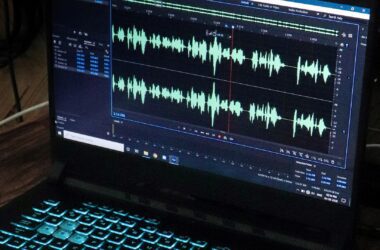Have you ever been fascinated by photos that capture the beauty and intimacy of nature, even if these scenes and objects could easily escape the naked eye? Maybe you’ve seen the winning photos from Apple’s recent photography competition, some of which depict a dewdrop on a flower petal or a unique leaf venation pattern. The answer lies in macro photography, which refers to a genre of photography that uses magnification in order to reveal an exquisite amount of detail in a small subject.
While macro photography truly shines in capturing wildlife and nature, it can also be used to show off the intricacies of objects like jewelry and clothing. If you’re interested in getting up close and personal with your photo subjects, here’s an overview of the various tools you can use in macro photography.
Use a high-end smartphone
Thanks to advancements in smartphone technology, you can easily get started on macro photography by using your own phone. The release of the Samsung Galaxy A73 5G phone features a quad lens setup that includes a 108MP wide camera, 12MP ultra-wide camera, 5MP depth camera, and of course, a macro camera set at 5MP—making it suitable and handy for beginners. High-end smartphones may not be able to beat the image quality of professional DSLRs and mirrorless cameras, but they’re convenient for taking quick snapshots of tiny subjects that you encounter in your day-to-day life.
Invest in macro lenses
If you are serious about macro photography and willing to make a huge investment right away, then macro lenses are the right choice for you. The Fujifilm XF 30mm f/2.8 macro lens is versatile with its 35mm equivalent focal length of 46mm, offering optimal magnification and image quality whether you shoot up close or at a normal distance. On top of rounded aperture blades that create a beautiful bokeh effect, you can further push your creative limits with its optimized control ring and a lens barrel that withstands all weather conditions.
Meanwhile, the Sigma Macro 105mm f/2.8 EX DG OS HSM is a budget-friendly choice that still offers high performance. It features a medium telephoto macro lens that’s perfect for natural lighting conditions, as well as an optical stabilizer that makes the composition and focusing of handheld photography more accurate.
Get closer using extension tubes
You can also use almost any conventional and telephoto lens for macro photography with the help of extension tubes. These relatively inexpensive accessories are mounted between the camera body and the lens to extend the distance between them. PetaPixel’s guide for shooting with extension tubes explains how these tools usually allow autofocus, although autofocusing can be more difficult to achieve with longer extensions that offer higher magnification. It’s also possible to stack a set of three extension tubes to achieve a higher total length or intermediary length. Just remember that the extra magnification is calculated by dividing the tube’s length by the lens’ focal length.
Stay simple with close-up filters
Finally, you can take advantage of the simplicity of close-up filters, which are attached to the front of your lenses to reduce the focal distance and increase the optical magnification for macro photography. These macro-attachments essentially work the same way as a magnifying glass and can be bought individually or in sets. They come in diopter values of +1 to +10, with the highest value providing a 1:1 macro ratio. However, just like extension tubes, you can stack lower-value filters to increase your lens’ magnification capability.








